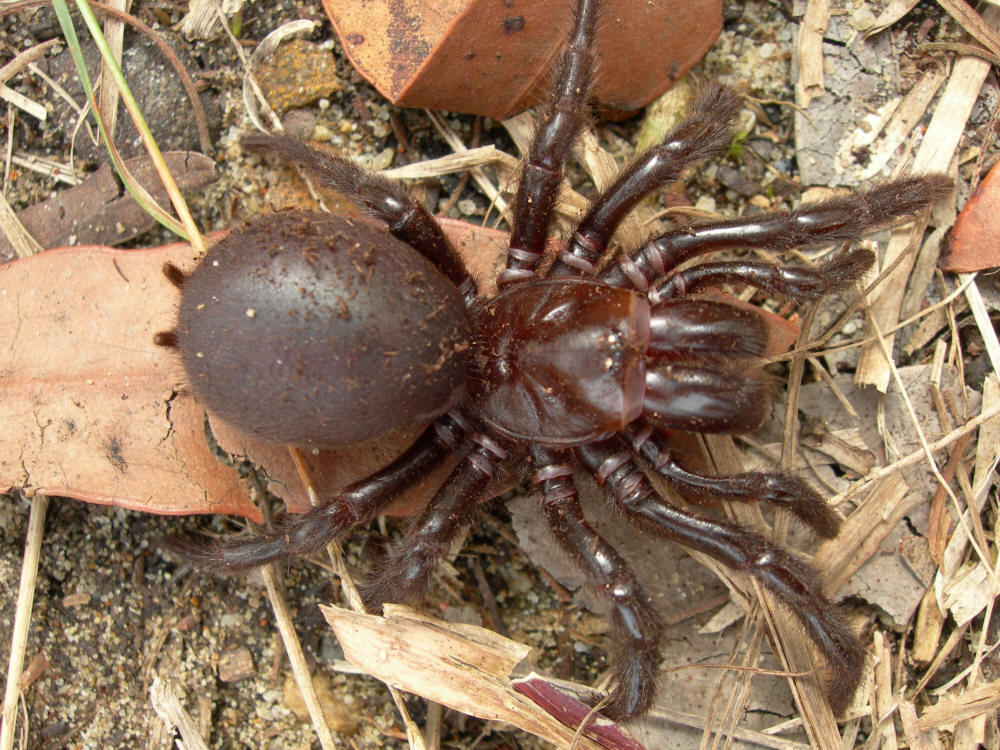In this species, mating can be deadly. The male must use the spurs on his front legs to keep the female from stabbing him during mating, otherwise he will become her next meal! The male deposits his sperm into the female's genital opening via his palps (modified front limbs). (Australian Museum Online) The female will then spin a pillow-shaped egg sac. Into this they can lay over 100 eggs, though not all develop. They care for the egg sac during incubation and will defend it if disturbed. The offspring hatch a few weeks later. They leave after two moults to begin their solitary existence. Juvenile males will stay in their burrows until their final adult moult, after which they will become wanderers. (Australian Museum Online) According to Australian Museum Online, Funnel-webs develop in two to four years, and the males live about nine months after that. The females, on the other hand, can live to around ten years!
Generally speaking, the males are the wanderers, and the females spend most of their time in their burrows, leaving occasionally to hunt at night. Males wander in search of females for mating in the summer and autumn months. This is when most encounters with humans occur. (Australian Museum Online)
